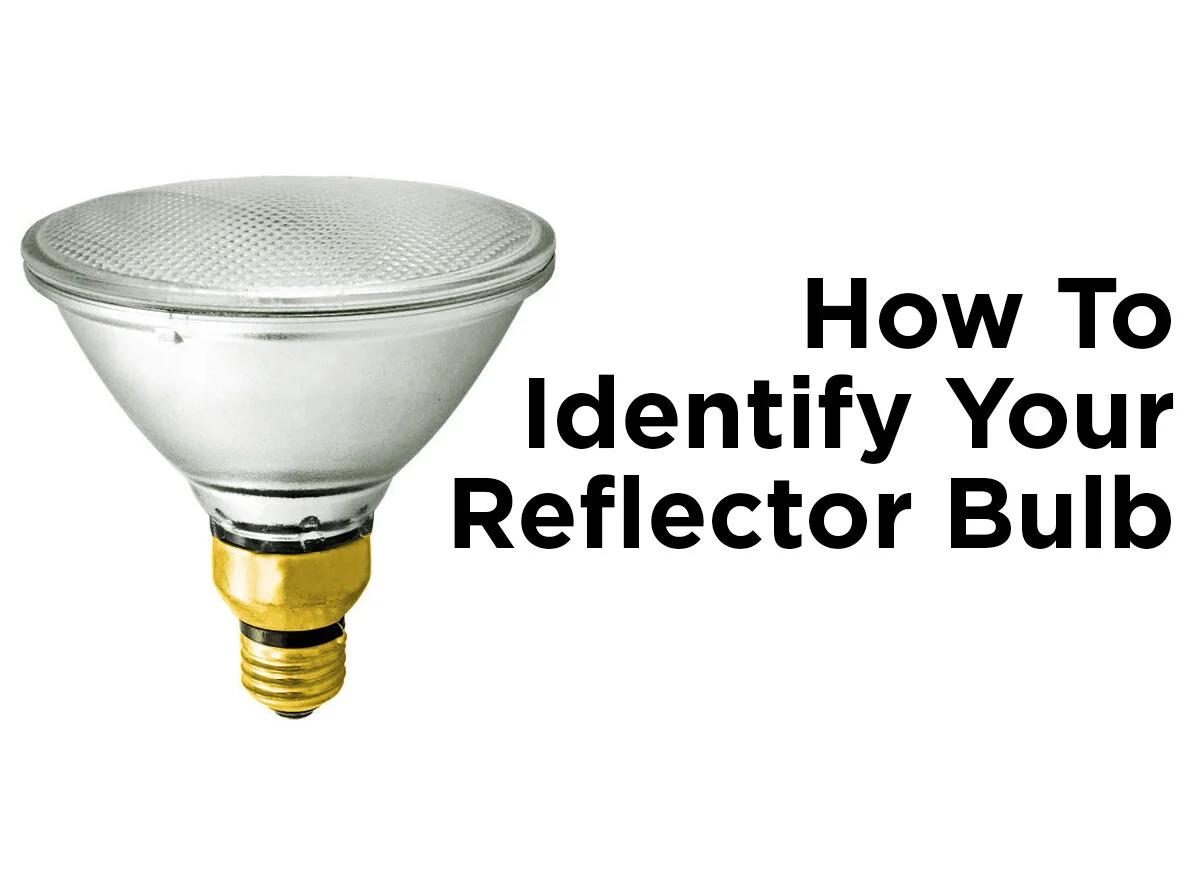How to Identify Your Reflector Bulb
Before CFLs and LEDs, most people referred to reflector light bulbs simply as "flood lights," or even less correctly, as "halogens." Only designers and commercial lighting installers knew bulb shape jargon like "PAR30" and "BR40." For better or worse, that's no longer the case. Since the advent of more energy-efficient lighting technologies, selecting a light bulb has actually gotten more complicated, often requiring everyday customers to know specialized bulb terms. No longer can you unscrew a burned out bulb, take it to the local hardware store, and pick the bulb's exact match. Now you have to ask yourself not only "What is this?" but also "What replaces this?"
Fortunately, learning the terminology and selecting the right bulb is easier than you might think.
R-Type Bulbs (R20, R30, BR30, R40, BR40)
If you're replacing a bulb inside your home with a diameter between 2-1/2 and 5 inches, you're likely looking for an R-Type bulb. They're what you usually see in kitchens, living rooms, and media rooms, especially in recessed cans. R-Type bulbs have a frosted face that evenly diffuses light and eliminates glare, but unlike a PAR bulb (explained next), the entire bulb envelope (lighting nerd speak for the outside of the bulb, not including the base) is made of blown glass. The outside of the bulb is completely smooth, and the bulb is relatively lightweight since it only consists of thin glass, a filament, and a brass base.
Because LED replacements for R-Type bulbs are rare and CFL replacements are much more easily found, let's focus on CFLs: To identify the CFL replacement you need, select an R-Type bulb based on its diameter. All light bulb diameters are referred to in eighths on an inch, so if the diameter of your bulb is 20 eighths of an inch (2-1/2 inches), you'll need an R20 CFL. If your bulb is 30 eighths of an inch in diameter (3-3/4 inches), you'll need an R30 CFL, and so on.
PAR Bulbs (PAR20, PAR30, PAR38)
If you're replacing a reflector bulb on the exterior of your home with a diameter between 2-1/2 and 4-3/4 inches, you're most likely looking for a PAR bulb. Unlike R-Type bulbs, PAR bulbs feature an aluminum reflector with a special pattern of impressions that amplifies and concentrates light in a single area. The bulb envelope is made of two pieces: The glass face and the shiny aluminum wall of the envelope. The texture of the bulb will be either rough or textured and the bulb will be heavier than an R-Type bulb due to thicker glass construction. PAR bulbs are also used indoors, especially in track lights; in a pinch, they'll work just fine for recessed lighting as well.
Both LED PAR bulbs and CFL PAR bulbs are easy to find, though they aren't always weatherproof like traditional halogen PARs, so be sure to check their UL listing before installing them outdoors. You can determine if you need a PAR20, PAR30, or PAR38 based on the bulb diameter in eighths of an inch, just as you would with an R-Type bulb.
An Exercise in Reflector Bulb Identification
A reflector bulb in your living room has just burned out. It's in a recessed light. When you remove it, you notice that the sides are smooth and the bulb is surprisingly lightweight. When you measure the diameter, it comes out to 3-3/4 inches. What is it? If you guessed it's an R30, you're right. Now what do you replace it with? If you guessed a CFL R30 or an LED PAR30, you're also right!
If you can't identify your bulb, no worries! Feel free to describe it in the comments on our blog, post it on the 1000Bulbs.com Facebook wall, or ask us about it on Twitter using our handle @1000bulbs.






